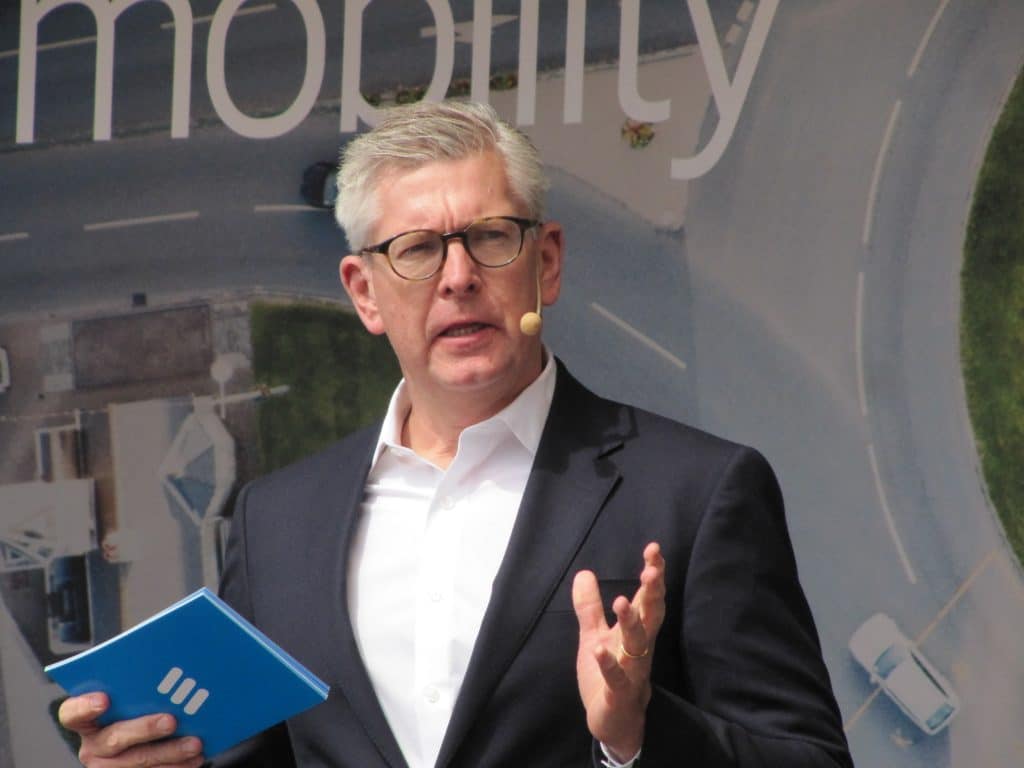
By ÅsaTamsons, Head of Business Area Technologies & New Businesses, Ericsson
Find out what IoT trends we will see more of in 2021. Among the IoT predictions ranging from digital healthcare, remote learning, connected manufacturing, and micro-mobility to sustainability, the common denominator is the overall accelerated adoption of wireless technologies.
With 2020, the world will never be the same. Nevertheless, I am eager to kick-start an exciting new year. If 2020 was the year to mitigate and manage the COVID-19 pandemic, 2021 is the year when “the new normal” becomes a cliché. What is evident is that the pandemic has disrupted daily routines and accelerated the adoption of new technologies, enabling us to work remotely, study from home, and maintain social distance. Many of those trends will continue into 2021, and there are strong implications for the Internet of Things (IoT).
IoT and connectivity have certainly helped keep us closer on a personal level while we’ve all been physically apart. The pandemic has nudged businesses to push forward with IoT adoption perhaps faster than they would have liked. To unleash the full value of IoT, secure, wireless connectivity is required.
Here are my IoT predictions for 2021:
- Transition to digital healthcare increases and pop up locations for testing and vaccines become more accessible – and pave the way for a new standard for health care services
- Remote teaching and learning open the doors to new digital experiences and shared resources – but also help democratize the access to knowledge
- Manufacturers and logistics become even smarter, and digital twins offer performance optimization and savings – with growing adoption and broader application
- Micro-mobility solutions transform our mode of transportation in urban environments
- The pandemic may have overshadowed sustainability, but it is the top challenge we have to jointly tackle – becoming the new standard for winning innovation and business
The upsurge in digital healthcarefor patients and caregivers
5G and IoT have enabled the possibility for remote or robot-led surgeries. Still, the COVID-19 pandemic has given new urgency to the need to limit contact between doctors and patients.
Those techniques have recently gone from theory to reality. In October 2020, two nine-month-old conjoined twins were successfully separated by doctors at UC Davis’s Children’s Hospital. The two young girls were joined at the head, creating a problem for surgeons because of the complicated network of blood vessels in the head. To map it all out, the doctors used Magic Leap’s mixed reality goggles to plot out what would need to be detangled before setting foot in the operating room – lowering the risk and increasing the chances for a successful surgery.
Not all the IoT’s impact on healthcare will be in the surgical theater. Better monitoring technology like wearables to track body temperature and heart rate can help people do more at home, reduce the need for doctor visits, and save costs. With the help of connected sensors, regional hospitals can track assets such as hospital beds, ventilators, lifesaving machines and decrease spending time on locating equipment. With 5G and consistent high-speed connectivity, high-quality video virtual check-ups can deliver quality and at scale.
Pop up COVID-19 test and vaccine locations will also be a focal point for 2021. Offering rapid response solutions with secure wireless connectivity will allow emergency and medical professionals to focus on patients and provide services and tools in new and unexpected venues.
Remote learning – it can’t be all virtual but can open new doors
Education is one of the sectors most disrupted during the COVID-19 pandemic. There are some things about the in-person educational experience that are difficult to replicate with even the best remote technology. Education’s social aspect is not fully transmitted through a screen, but teachers have been nimble and creative. Educators have adopted new tools at first out of necessity and a need to engage remote students. But there’s no reason these trends can’t continue even as the pandemic fades. 5G and IoT technologies can help enable new experiences, like virtual field trips. A virtual tour of a museum won’t be the same as visiting in person, but it can be more engaging and memorable than reading about it in a book.
IoT can help bridge the digital divide by effectively sharing resources and teachers. In rural areas, students can potentially learn from a calculus teacher from another school. Better IoT applications will make it easier for teachers to virtually “visit” the classroom and interact with students. We will see an increase in digital and virtual teaching and learning methods.
Smarter manufacturing and supply chains
Rethinking and updating manufacturing, operations, and supply chains will be accelerated even more during 2021. A need to manufacture and produce locally has been driving advances in logistics efficiency. The pandemic has led to the proliferation of smart devices in manufacturing environments. This will continue, even as the virus comes under control as vaccines are distributed. Businesses realize that by incorporating IoT applications into the factory floor, the business and economic benefits quickly materialize. For example, infrared cameras on a production line could replace inspectors, freeing up staff for other duties. A robotic crawler in the heating, ventilation, and air condition system can monitor conditions in a way that’s impossible for a human.
2021 will be the year of digital twins and 5G. Twinning is when you collect data on a process or machinery to create a predictive model, a digital “twin,” that allows better tracking of wear and tear and maintenance needs. At the end of the day, these operational efficiencies save costs.
One company taking full advantage of what digital twins and XR offers is Taylor Construction in Australia. With 5G, the construction workers, architects, and production teams have secure high-speed connectivity and low latency to apply holographic building visualization, 360-degree safety scanning, smart sensors on structures, and onsite real-time digital design blueprints.
Tracking micro-mobility is changing the way we move in cities
As most of us are working from home, our mobility is limited to the proximity of our local community. With changing patterns in using cars and public transportation, other modes of transportation, including electric scooters or electric bikes, become more prevalent. With e-scooter sharing schemes available in more than 100 cities, across at least 20 countries, from Chile to South Korea to New Zealand, they all have to be connected. IoT is the foundation for connecting and coordinating these scooters and provides connectivity for micro-mobility companies to provide these services.
Sustainability carries into 2021
In 2020, sustainability was overshadowed by the COVID-19 pandemic. In 2021, it is a prerequisite for our future. Digital technologies play a pivotal role in helping the global community reduce greenhouse emissions and could enable one third of the 50% global emission reduction needed by 2030, as highlighted in the latest Exponential Roadmap report. As a technology leader, Ericsson has played an active role in setting a precedent and has reduced its emissions by 50%. Digital technologies and IoT enable access to basic human needs like clean water and food.
According to the United Nations, 3 in 10 people lack access to safely managed drinking water services. Real-time data monitoring and smart systems can ensure water quality. One company addressing the need for clean water is Wayout. Wayout has made it possible for micro-factories to locally produce clean, filtered water with a minimal eco-footprint. Powered by solar panels, the micro-factories offer an advanced water purification system. Smart agriculture is another example of how we can improve our resource efficiency for food production. Stanley Black & Decker has initiated a smart connect water irrigation system for local farmers in India. With intelligent and connected irrigation, the farmers can better manage groundwater resources and leverage the seasons to produce up to 3 crops a year, leading to additional yield and income.
Smoothing out the bumps
As we proceed with digital transformation on a broader scale, and with increasing speed, there will be bumps in the road. As more devices are incorporated into businesses, standardization and connectivity become increasingly important.
If we can address those challenges, we can take a significant leap forward in IoT in 2021, with 5G as an innovation platform and sustainability grounded in our business. The COVID-19 pandemic has accelerated the adoption of these technologies out of necessity. But they will be with us moving forward as connectivity becomes even more critical to the way we live, learn, and work. And smarter technology will be better and help liberate business.
Read more about how IoT can transform enterprises.




